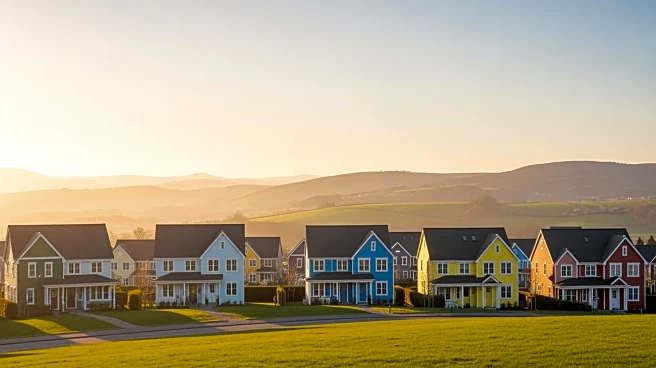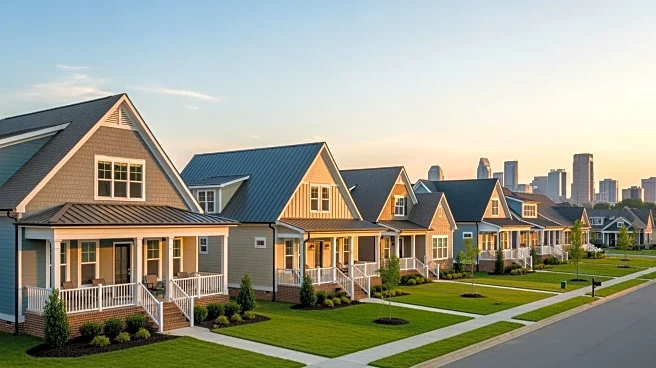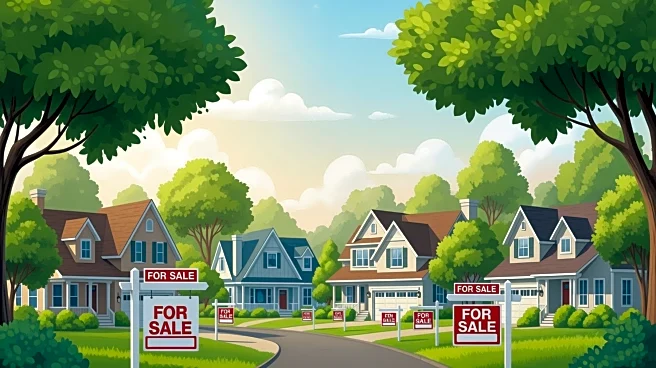What's Happening?
In Carbondale, Illinois, home prices are beginning to stabilize across the country, yet they remain high, making it difficult for many potential buyers to afford homes. This situation is exacerbated by near record-high mortgage rates, which significantly
increase monthly payments. As a result, many prospective homeowners are expanding their search areas beyond expensive urban centers, especially with the flexibility of remote work. According to data from Realtor.com's Cross-Market Demand Report, Carbondale is a significant area of interest for homebuyers. The report highlights that Carbondale has a view share of 17.5% for active listings, with a median listing price of $215,000 and a median price per square foot of $127.
Why It's Important?
The high home prices and mortgage rates in Carbondale reflect broader national trends that impact the housing market. These conditions can deter potential buyers, affecting the real estate market's growth and stability. The shift in buyer interest towards more affordable areas like Carbondale indicates a potential demographic and economic shift, as people seek more cost-effective living arrangements. This trend could influence local economies, as an influx of new residents might increase demand for local services and infrastructure. Additionally, the ability to work remotely allows more flexibility in choosing where to live, potentially leading to a more distributed population across the U.S.
What's Next?
As the housing market continues to adjust, potential buyers may keep looking for opportunities in less expensive areas like Carbondale. This could lead to increased competition in these markets, potentially driving up prices over time. Local governments and developers might respond by increasing housing supply to meet demand, which could stabilize prices. Additionally, any changes in mortgage rates or economic conditions could further influence buyer behavior and market dynamics.
Beyond the Headlines
The trend of moving away from urban centers could have long-term cultural and social implications. It may lead to a more decentralized population, affecting everything from local economies to political landscapes. The shift could also impact urban planning and development strategies, as cities may need to adapt to changing population densities and demands.













